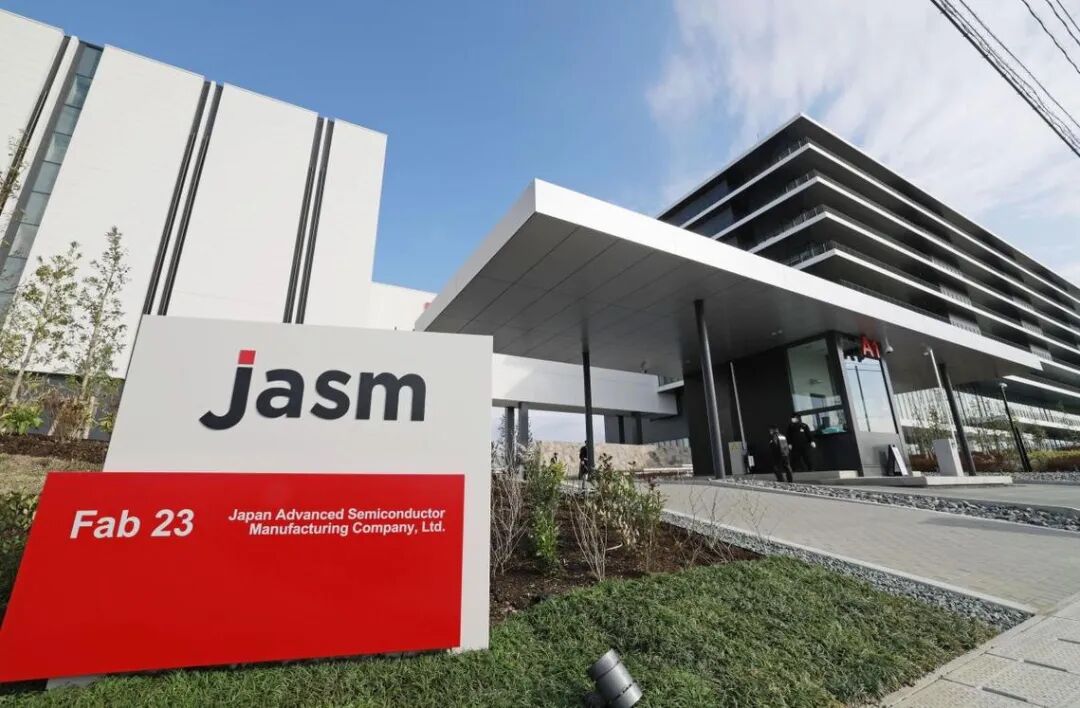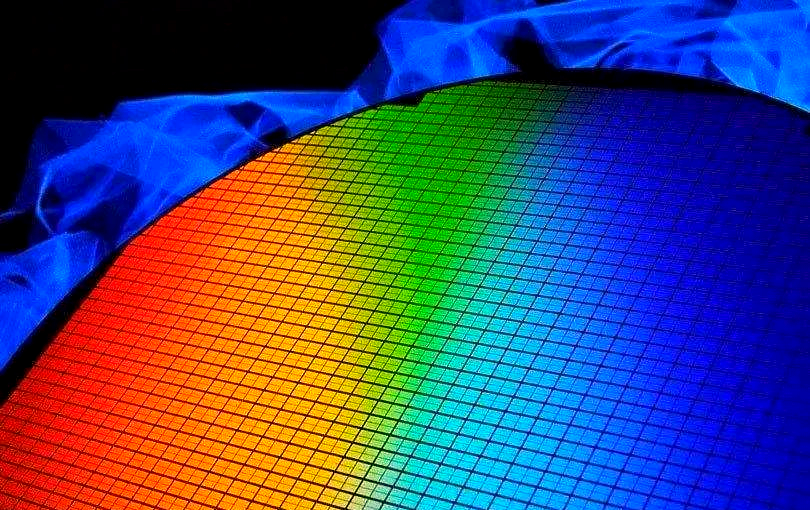 Header image generated by Doubao, prompt: chips cherry blossoms
Header image generated by Doubao, prompt: chips cherry blossoms
Japanese media generally view the pursuit of a balance in import and export trade between countries by U.S. President Trump as a “reciprocal tariff” that has caused significant shocks in finance, industry, international trade, and relations between countries, termed the “Trump Shock”.Among them, the semiconductor industry has been particularly affected!
In early April, after Trump announced the implementation of “reciprocal tariffs”, semiconductor-related stocks in the previously stable Tokyo stock market fell by more than 30% within a week, while during the same period, stocks of companies like Nvidia and Apple in the U.S. also suffered significant losses.
The semiconductor industry is a key focus in Japan’s industrial policy. In 2021, the Ministry of Economy, Trade and Industry established the “Semiconductor and Digital Industry Strategy Review Meeting”, which proposed numerous policy recommendations regarding industrial policy and financial support for related companies, continuing the technology introduction and localization policy of “introducing Machine No. 1 and domesticating Machine No. 2”.
Currently, the semiconductor factory established by Taiwan Semiconductor Manufacturing Company (TSMC) in Kumamoto Prefecture has successfully entered mass production, achieving Japan’s goal in the semiconductor introduction phase. The next step towards localization is being advanced through the establishment of RabiDas. As of April 1, 2025, RabiDas’s production line has been basically completed and has entered the trial production phase.
At this time, Japan faces the problem that the Trump Shock has not only caused severe fluctuations in the stock prices of international semiconductor companies but has also made the future market more uncertain.
The Japanese market originally had its own insurmountable difficulties: RabiDas has yet to find domestic companies that use its produced 2-nanometer chips, and abroad, only IBM in the U.S. has shown interest. RabiDas’s total investment amounts to 5 trillion yen (approximately 256 billion RMB), a huge sum that primarily relies on government financial subsidies, with no funds raised from other companies or the stock market yet.
How this massive state investment will be funded, how the invested funds will be recovered, whether full recovery is possible, and who will be responsible if it remains in a state of long-term loss are all unclear in today’s Japan.
On April 25, 2025, the Japanese Diet amended the “Information Processing Promotion Law”. This amendment can almost be considered tailor-made for RabiDas, using national credit to raise substantial funds for private enterprises.
In addition to substantial economic subsidies, it is also necessary to legislate to allow a private enterprise to obtain funding from various sources, becoming an important part of the national economic pillar.
RabiDas’s success or failure in the future market is directly related to whether Japan’s pillar industries can stand up, and it concerns the credibility of Japan’s economic policy. The potential impacts of the Trump Shock on RabiDas are particularly worthy of attention and analysis.

 Introduction of Machine No. 1:TSMC’s Kumamoto factory has entered the mass production phase
Introduction of Machine No. 1:TSMC’s Kumamoto factory has entered the mass production phase
In terms of introducing technology to develop the domestic economy, Japan has always followed the path of “introducing Machine No. 1 and domesticating Machine No. 2”. In other words, after introducing technology from abroad, it quickly enters the stage of digesting and absorbing that technology, rapidly localizing it, and after a certain degree of technological innovation, advancing the relevant technology to a new stage.
This is how Japan has progressed in textiles, steel, home appliances, and automobiles.
However, the semiconductor industry is somewhat different. Originally, the main technology of semiconductors was also introduced from abroad, and after digestion and absorption, Japan was at the forefront of the world in the 1980s. However, during the Japan-U.S. semiconductor war, the Japanese government (Ministry of Economy, Trade and Industry) began to abandon support for its domestic semiconductor industry, and semiconductors gradually became a discarded pawn in economic policy. Coupled with the outflow of Japanese industry, domestic demand for semiconductor chips decreased, making the semiconductor industry a huge burden in economic policy. By around 2010, Japan had “struggled” to make its semiconductor industry insignificant in the international market by not innovating technology and not investing.
However, as Japan began to formulate an “economic security” policy that stands in opposition to China economically, and after it could no longer compete with China in textiles, steel, home appliances, and new energy vehicles, Japan recognized its technological advantages in materials (wafers, photoresists, etc.) and manufacturing equipment (important components of lithography machines) and believed that revitalizing the semiconductor industry, which had been neglected for decades, was an important way to achieve economic security, thus beginning to pay attention to the semiconductor industry.
Unfortunately, by this time, Japan had lost its technological advantage in semiconductor chip production and needed to rely on Taiwanese companies to revive the semiconductor industry.
In December 2024, TSMC’s semiconductor factory, Japan Advanced Semiconductor Manufacturing (JASM), began mass production, primarily producing 28 to 22-nanometer chips.
It is worth noting that the most advanced chips produced by Japanese companies previously were only 48 nanometers, and being able to produce 28 to 22-nanometer chips represents a significant technological advancement for Japan. For this advancement, Japan provided TSMC with a subsidy of 467 billion yen (approximately 24 billion RMB), and the Japanese government will continue to provide financial support for the second and third factories to be put into production in the future.
JASM’s shareholders include Japanese companies such as Sony Semiconductor Solutions, Denso, and Toyota, ensuring a sufficient market for products that can be sold to shareholder companies and other Japanese companies.
Once JASM stabilizes mass production, it will be able to upgrade its products to 16 to 12 nanometers, achieving new progress. These products can also be absorbed in the Japanese market. TSMC is investing and producing in Japan by producing chips where there is demand, and will continue to do so in the future.
The introduction of Machine No. 1 policy has been successful in Japan.

 Domesticating Machine No. 2:RabiDas has entered the trial operation phase
Domesticating Machine No. 2:RabiDas has entered the trial operation phase
The main plan of Japan’s semiconductor policy is to achieve the production of 28 to 22-nanometer chips in Japan through the introduction of TSMC in the first half of the 2020s, and in the second half of the 2020s, to maintain the manufacturing capability of 2-nanometer chips through the establishment of RabiDas. After the 2030s, Japan’s technology will focus on research and development of Beyond 2-nanometer and optoelectronic fusion technologies, with NTT (Nippon Telegraph and Telephone Corporation) being the main company responsible for breakthroughs.
On April 1, 2025, as one of the important contents of domesticating Machine No. 2, RabiDas’s factory in Chitose City, Hokkaido, officially completed preparations for trial operation and will officially enter mass production in 2027.
“This month we officially entered the trial operation phase and will strive to achieve the goal of starting mass production in 2027,” said RabiDas President Junichi Koike to Japanese reporters on April 1.
In September 2023, RabiDas officially began construction of the factory, and by December 2024, the installation of lithography machines was completed. After that, it took less than four months to complete equipment debugging, and on April 1, it officially entered the trial operation phase. This speed is quite fast in today’s Japan.
The production of chips requires thousands of processes, and the trial operation phase requires repeated trial production of these thousands of processes, which takes months to integrate. By July 2025, RabiDas should be able to produce trial chips.
Once trial products are available, the issue of chip “yield rate” will become very important. Before 2027, improving the yield rate to allow the company to profit from production will be the key focus of RabiDas in production.
If it were merely a domestic technical issue, it would be much simpler to handle. The past experiences of steel, home appliances, and others would be sufficient for the semiconductor industry to learn from, and the huge domestic market for products allowed steel and home appliance companies to grow rapidly.
But semiconductors are different. First, TSMC will officially start mass production of 2-nanometer chips in 2025, while RabiDas will be two years behind, which in the semiconductor industry is essentially a generational delay.
TSMC has the advantage in yield rate and market share; can RabiDas catch up? This is a significant departure from Japan’s past experience of quickly expanding domestic and international markets after digesting and absorbing foreign technology. RabiDas will face major risks in the mass production of 2-nanometer chips.
As mentioned earlier, TSMC is market-oriented, producing chips where there is demand. In contrast, RabiDas is production-oriented, and as of the end of April 2025, RabiDas has only received an intention from IBM in the U.S. to purchase chips, with no other buyers.
In the absence of buyers, relying on Japanese government financial subsidies, using Japan’s advantages in materials and equipment, and maintaining the highest technology in cutting-edge semiconductor chips, whether it can attract investment and achieve technological progress is a significant risk.

 Government’s Full Intervention:Utilizing the “Information Processing Promotion Law”
Government’s Full Intervention:Utilizing the “Information Processing Promotion Law”
So far, the Japanese government has provided RabiDas with 1.7 trillion yen in research and development subsidies, but the funds required to achieve mass production amount to 5 trillion yen. When the company was established, several Japanese companies invested 7.3 billion yen, and with this investment, after obtaining government subsidies, there will still be a funding gap of at least 3.3 trillion yen. It is impossible to raise funds from the stock market before mass production, requiring the government to continuously inject new funds to achieve the ultimate goal of leveraging 7.3 billion yen to mobilize Japan’s 5 trillion yen investment.
Japan has not previously provided a single company with a 5 trillion yen financial subsidy; continuous funding for RabiDas requires the Diet to institutionalize the funding for RabiDas through legislation.
On April 25, 2025, Japan amended the existing “Information Processing Promotion Law” to ensure that RabiDas can obtain sustainable funding.
The “Information Processing Promotion Law” was originally passed by the Japanese Diet in 1970. The recent amendment allows RabiDas to have sufficient guarantees for obtaining funds. Specifically, the Japanese government’s investment in RabiDas is implemented through the independent administrative agency “Information Processing Promotion Agency (IPA)”, which can also recruit private investment and use financing from private financial institutions to provide debt guarantees for related financing.
As previously analyzed, RabiDas faces technical and market risks, which Japanese companies are well aware of and will not actively invest in RabiDas. However, with IPA’s guarantee, the situation changes significantly, as the IPA is backed by the Japanese government, making financing much easier. With private financing, the amount of government subsidies can be significantly reduced.
The policy of introducing Machine No. 1 and domesticating Machine No. 2 has undergone a new change in modern Japan due to the emergence of RabiDas, requiring legal and financial reforms to achieve national financial support. RabiDas is a significant opportunity for this transformation.
Japan has been slow to develop in the popularization of electric vehicles and the research and development of artificial intelligence (AI), and the market demand for cutting-edge chips is not high. However, this does not mean that Japan will lack a market for cutting-edge chips in the long term. Japan will gradually catch up in areas such as autonomous driving, AI, and aerospace, and at that time, a good domestic market may emerge.
However, in the international market, economic security has almost severed Japan’s relationship with the world’s largest market—China—in terms of cutting-edge semiconductor chips. This policy of restraining China’s development in cutting-edge technology cannot last forever, and there may be significant changes one day. The policy of enhancing Japan’s semiconductor industry through RabiDas is understandable.
However, the Trump Shock has burst the AI bubble in the U.S., causing significant setbacks for companies like TSMC and Nvidia in the stock market. Currently, RabiDas, still in its infancy, faces even greater difficulties and uncertainties in the future semiconductor market.
RabiDas hopes to achieve mass production by 2027 and profitability by 2030, with aspirations for an IPO at that time. However, if the produced 2-nanometer chips go unsold, and new technologies like Beyond 2-nanometer enter practical use ahead of schedule, the 5 trillion yen investment may be wasted. The guarantees provided by the Information Processing Promotion Law may not necessarily convince private financial capital to invest in RabiDas.
In 2025, when the Trump Shock severely disrupts the semiconductor market, the difficulties faced by RabiDas may be extraordinary, and future challenges may be insurmountable.
—— · END · ——
No.6339 Original Article|Author Chen GangWhitelist opening duanyu_H|Submission tougao99999 Welcome to clickto see 【Qin Shuo Friends Circle】】